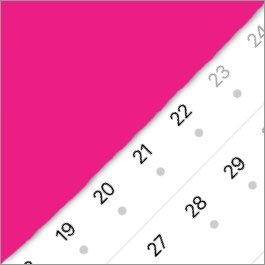Grade 2 Technical Focus: Rim Clicks/Side Sticking and Hi Hat Dynamic Control
By Tom Warner
The important thing to focus on when you are learning 'Under the Bridge' by Red Hot Chili Peppers is to maintain a quiet dynamic. It’s a chilled song (besides the kick in at the end) so you hardly have to move at all. This article is about how you look at your own position and control over your sticks and of yourself.
Rim clicks/side sticking
A good sound for this is entirely up to you. Sounds are different based on where on the rim you hit, and how far along the stick you go, so experiment with some different positions and find a sound you like. You will need to have the heel of your hand against the snare (make sure the butt of the stick is only an inch or two out of the back of your hand) and your fingers along the side of the stick; don’t get your fingers trapped between the stick and the snare. Then, in order to perform a strike, you raise the stick at the neck (or taper) and strike downward without raising the back of the stick. You might feel like you are pushing a little bit into the snare, and that’s fine, it actually dulls any unwanted ringtone from the top head. Your hand and stick should be rested on the snare head, and don’t come away from it (besides the neck of the stick).
Hi hat dynamic control
For the bulk of the song, we play quiet hi hats. You’ll see a p, meaning piano, which means ‘play softly’. Think of your hi hats as a horizontal line. If you position your hand above the line, you will end up hitting the top of the hats, and get a 'chick' sound; which is the ideal sound for this song. If you move your hand below the hi hat line you get a 'tsch' sound where you strike the edge - the louder sound of the two. Don’t move your arm or shoulder too high to strike these parts, just angle your wrist up or down so that your index finger can sit on top of or underneath the hi hats - you’ll get used to the position, don’t worry! To maintain control of this sound, make sure you keep your elbow fixed in position to make sure you don’t get a change in sound, and relax your shoulders. A lot of power comes from movement with drumming, and if you want a quieter dynamic, you should move less, so try to keep your movement in your wrists and fingers. Allow the stick to roll over your index finger, and presto, you'll have your hi hats down to a tee.
Try these exercises to develop your wrist motion. Use the ‘under the hats’ position for the accent, and ‘over the hats’ position for the normal taps.
EXERCISE 1
EXERCISE 2
EXERCISE 3
Controlling your stick
When it comes to controlling your dynamic, the two key parts to this are you and the stick. The stick won’t move without you moving, and you won’t get as good a sound without the stick. Your movements make the stick heavy or light, so if you want to control the sticks flow of movement, make sure you first have a relaxed grip - it should be loose enough for you to be able to pull it out of your hand. Don’t grip with the middle, ring or little finger, but let them cage the stick to stop it from coming out of the hand (your grip should be loose enough that you can feel the stick hit you in these fingers and the palm of your hand when you play). Once you feel the stick is moving more than your hand try to create an even feel just playing quavers (8th notes), and move as little as possible without any tension in your arms or shoulders. The sensation you want to aim for as a base level of control is that you don’t feel as though you are moving at all, but you do feel the stick hitting your fingers and palm. Don’t worry about the loose grip, you won’t drop your stick or get blisters (tight grips will make this happen), so place plenty of trust in your ability, think confidently, and stay relaxed. Concentrate on your index finger and thumb tips (this makes your brain relax the rest of your hand, and only generate force from the tips of your fingers). Tension equals lack of control, so make sure you feel loosey goosey in your shoulders and arms.
Try to play these exercises with as little effort as possible.
EXERCISE 1
EXERCISE 2
EXERCISE 3
EXERCISE 4
Controlling your body
Without any movement, you won’t move around the kit – this is particularly important for fills. Movement is made by your elbow first, and your shoulders second (if needed) so make sure both are relaxed. Keep your elbows straight down your sides, and your arms at 90 degrees to them (parallel to the floor) – this should be your ideal position. From there you can get as much movement around the kit as your need, without much movement from you. Your sticks are usually over 16 inches long, so they provide plenty of reach; try to move around the kit as much as possible, without moving your body as much. You can twist your waist, move your elbows out, move your shoulders forwards, anything so long as you are comfortable and relaxed. There are no wrong answers in movement; the only rule is DON’T TENSE UP. You’ll notice how many pro’s can play for hours on end without breaking so much as a sweat – because they are relaxed when they play (the only sweat they make is from the heat on stage). Being relaxed goes a long way for control. You’ll be able to move freely around the kit for your fills like this, and it will make playing this song, and changing your dynamic from the quiet bulk, to the louder outro, much more controlled.
About the author
Tom Warner is a drum tutor based in Sheffield, UK. He is in the process of completing a Masters Degree in Creative Practice revolving around Physiotherapy and Neurotherapy with drumming at the heart, and has the intention of starting a PhD by 2021 to further his studies in drumming as a clinical therapy. He has worked as a leading drum teacher at mgrmusic.com since 2014, teaching hundreds of students during this time.















